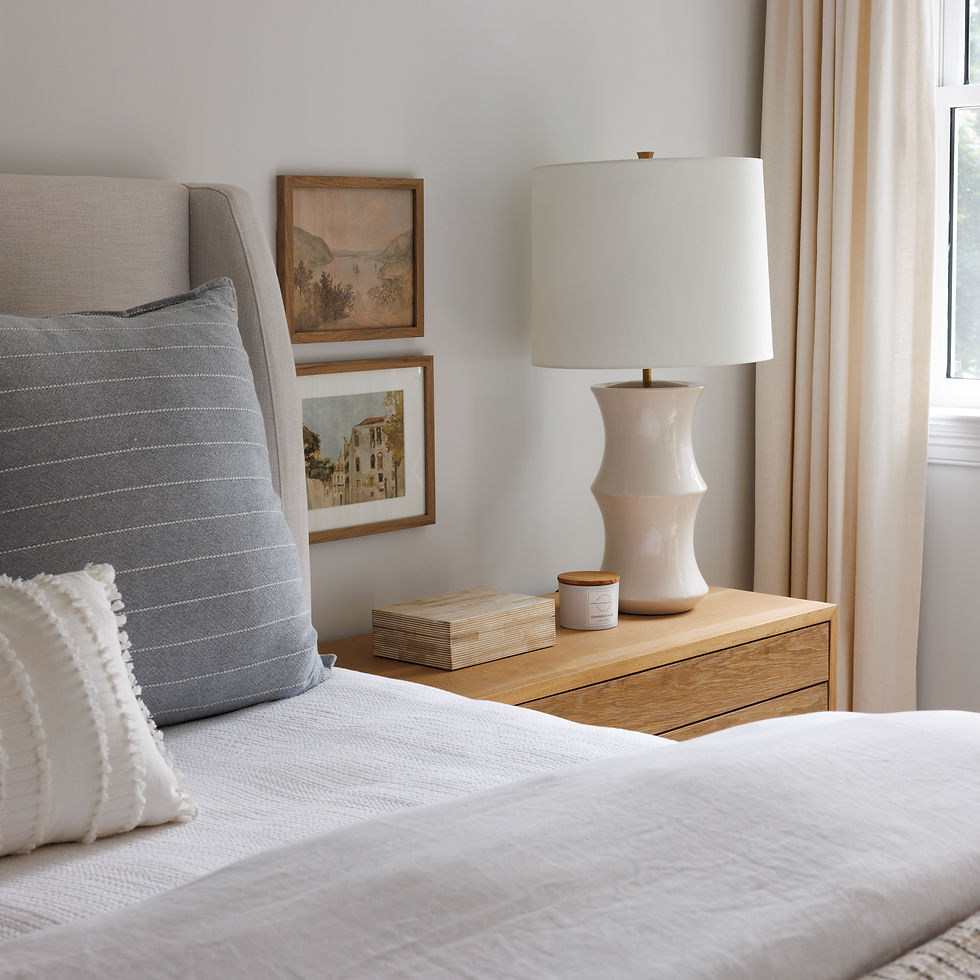The Magic of Mood Boards
- Madison Lussier
- Aug 3, 2021
- 2 min read

Mood boards are by far one of the strongest tools in an interior's designer's arsenal to communicate ideas early in the design process. No one is a mind reader, so strong visual ideas to communicate with each other keep both the designer and the client on the same page from the beginning. Sometimes we will create them with physical elements, and sometimes more digitally, but either way the goal is to give the overall look and feel of whatever we’re designing. We were lucky to have our photographer Lindsey in the office when we were working on some physical mood boards for a few projects last month - if you are looking for some inspiration, scroll through and maybe you'll find exactly what you've been looking for!
We had so much fun working on these boards and these videos - can you tell? One thing to mention is that these mood boards don't necessarily show all items we will use in the project, especially when we do them early on. It's more to capture color, texture, and feeling than anything else! But all of our senses are so powerful that we find that physical mood boards start big ideas, or show us what kind of textures and colors make sense in spaces we hadn't even thought through yet.

Expectations are so easy to misread, especially if someone can't verbalize how they imagine the finished interior of their home to look. What one person considers "textural and light" another might call "beachy" when they want something completely different, and we would waste countless hours on ideas that were destined to be passed over come presentation time. That's why all mood boards, and especially physical boards like these, are so important in the early stages of a project.

Mood boards are the perfect jumping off point for any design project. It really is the playing phase of a project, where the possibilities are endless and it's worth it to take some risks. It really is the first big puzzle of any home we work on, and it may seem intimidating to others outside of the creative fields, but it's the equivalent of an artist's sketchbook or impromptu chord playing on a musician's instrument of choice - have fun and throw some things together!

Once we're past the mood board stage, the design boards come into play, and decisions start to finalize. Pieces of mood boards become critical to certain spaces, and others fall away in the process, maybe a color scheme from a mood board finds itself in a smaller aspect of the design. And off we go into more final decisions!

Which mood board was your favorite? Let us know in the comments below!



.png)
Thank you for the information, I've been looking for this kind of information for my brand website where I'm providing the powerpoint presentation services, Your post help me a lot for make a new design for my site.